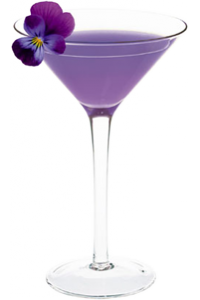Cocktail: A project with many protagonists


Until now, the word cocktail would remind us of hot summers, colourful cover ups, wooden beach bars, tropical scents and colourful cheesy little umrellas. Of course the summer cocktail enjoyment in the above scenery will always be welcome, but things have now become more “serious”.
Cool bars that spring up in every corner, modern restaurants and hotel bars with a wide gastronomic range, that enrich their menus with extra gourmet cocktails, restless bartenders and adventurous mixologists have turned things upside down, radically changing the word's meaning.
Flash Back:
Cocktails became famous during the alcohol prohibition in the United States (1919-1933). The need of alcohol's “camouflage” was covered with its mixing with other alcoholic or not, beverages. It seems thought that cocktails began getting produced in the beginning of the 19th century. Sazerac* is considered as one of the oldest cocktails which has its roots in the New Orleans in 1850 while the first bar guide, was published in 1862: How to mix drinks, by Jerry Thomas.
The cocktail trend swept Europe with the famous Harry's New York Bar as a reference point, which after travelling across the Atlantic, was settled in Paris. That was Bloody Mary's and other famous cocktails' place of birth. After the World War II, cocktail consuption was in recession.
The Cock's Tail
In a freeform translation, it means the cock's tail (cock-tail). However there have been several claims about the word's etymology, although nobody can be entirely sure of their validity. Behold some of the word's hypothetical origins:
- Way before bars made their appearance, taverns kept the drinks they sold, in barrels. As the drinks would finish, the barrels residue, or “tail” as it was called, would lose from it's original quality. So they would transfer residue from all the barrels that used to contain gin, whiskey, rum, etc. to a different barrel and sell its content for a cheaper price. As this mixture lessened, it would reach the barrels faucet or as it was called, “cock”, its price would also decrease. The customers would ask for that residue for a lower price since it was a “cock-tail”.
- In the older years, it was traditional for drinks to be served with a cock' s tail feather, so as to garnish and stir the drink but as a trade mark for those who would avoid alcoholic beverages as well.
- In the beginning of the 19th century, in New Orleans, the norm was to serve the drinks in oval cups known as coquetiers.
- According to another version, the word comes from the french coquetel that refered to the wine mixture in the 18th century France.
- Some claim that in the Mississipis river boats, lucky game winners would wear a red Cock' s feather and they would prepare a mixture made of any alcoholic beverage was behind the bar and serve it in a glass and stir with a spoon that looked like the cock' s tail.
Sazerac*: 2 parts Rye Whiskey or Brandy, a few drops Angostura bitters, 1 tbsp sugar and 1 tbsp Absinth.